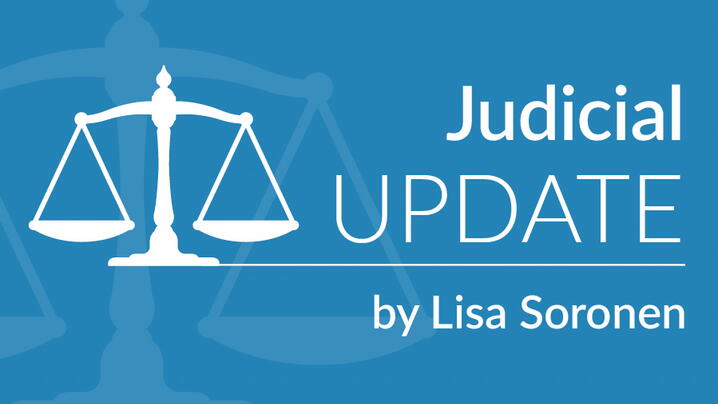
by Lisa Soronen, executive director, State and Local Legal Center
A United States Court of Appeals for the Ninth Circuit opinion temporarily striking down President Trump’s third travel ban was recently met with little fanfare likely for two reasons. The decision came down right before Christmas (December 22), and in early December, the Supreme Court allowed the third travel ban to go into effect until the Supreme Court rules on it, even if the Ninth Circuit (or Fourth Circuit) were to strike it down in the meantime.
The president’s March 6 executive order (the second travel ban) prevented people from six predominately Muslim countries from entering the United States for 90 days. In June, the Supreme Court temporarily prevented it from going into effect against those with a “bona fide relationship with a person or entity in the United State” until the Court could hear the case on the merits in early October.
The second travel ban was set to expire on September 24. That day, the president issued a presidential proclamation (the third travel ban) indefinitely banning immigration from six countries: Chad, Iran, Libya, North Korea, Syria, and Yemen. Persons from some of these countries and Venezuela also may not receive particular nonimmigrant visas. Following the presidential proclamation, the Supreme Court dismissed the case challenging the second travel ban.
Shortly before the third travel ban was supposed to go into effect, federal district courts in Hawaii and Maryland issued temporary injunctions blocking it.
After those decisions, the Supreme Court ordered the third travel ban to go into effect temporarily while the Ninth and Fourth Circuits review the lower courts decisions and, assuming the government loses before those appeals courts, while the cases are on appeal to the Supreme Court.
Why did the Ninth Circuit rule against the federal government?
The Immigration and Nationality Act (INA) grants the president the power to “suspend the entry of . . . any class of aliens” “for such period as he shall deem necessary.” The third travel ban prohibits entry for some indefinitely but, according to the Ninth Circuit, “Congress’s choice of words is suggestive, at least, of its hesitation in permitting the president to impose entry suspensions of unlimited and indefinite duration.”
The INA also allows the president to prevent “entry of a class of aliens into the United States [that] would be detrimental to the interests of the United States” but only if the president is able to articulate “findings support the conclusion” that allowing entry to such persons “would be harmful to the national interest.”
The third travel ban suspends people entering from countries identified as having “inadequate identity-management protocols, information sharing practices, and risk factors” related to immigrant security screening. The Ninth Circuit characterized the ban as “mak[ing] no finding whatsoever that foreign nationals’ nationality alone renders entry of this broad class of individuals a heightened security risk to the United States.”
The INA also prohibits national origin discrimination in the issuance of visas. The government argued that this section of the law only applies to the issuance of visas not entry into the United States. To this argument, the Ninth Circuit responded: “It is difficult to imagine that Congress would have celebrated the passing of the bill as ‘one of the most important measures treated by the Senate . . . [for its] restate[ment] [of] this country’s devotion to equality and freedom’ had it thought the president could simply use [this section of the law] to bar Asian immigrants with valid immigrant visas from entering the country.”
So what will likely happen next in the chess match that has become the travel ban litigation? It's likely that soon the Fourth Circuit will rule on whether the third travel ban is lawful and/or constitutional. Even if the Fourth Circuit decides the case in favor of the federal government, the government is likely to appeal the unfavorable Ninth Circuit ruling to the Supreme Court, even though it currently has no practical effect.
New, Reduced Membership Dues
A new, reduced dues rate is available for CAOs/ACAOs, along with additional discounts for those in smaller communities, has been implemented. Learn more and be sure to join or renew today!
